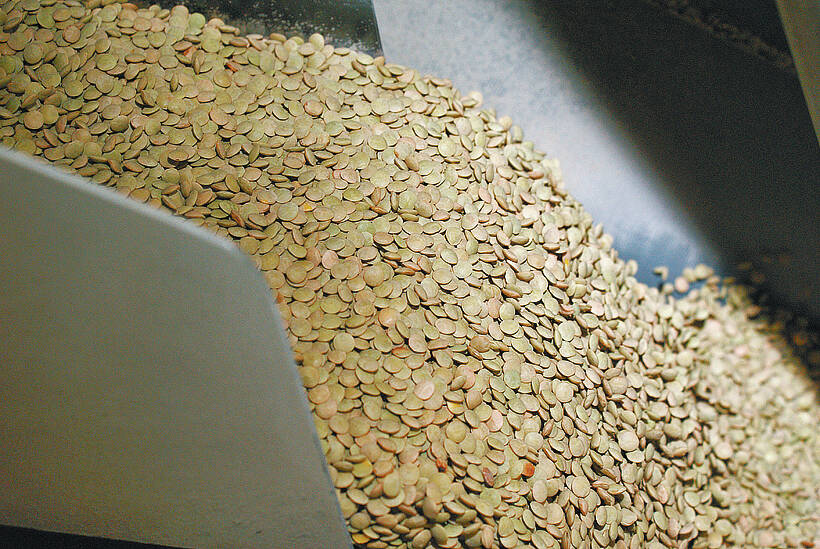New option for CWB pools | Futures choices will give farmers risk management benefits and greater pricing flexibility
Farmers who participate in CWB pools in the 2013-14 crop year will have the option of locking in futures values on grain that has already been committed.
CWB officials say new pool offerings will give farmers an opportunity to lock in futures prices at various times during prescribed pooling periods.
The “futures choice” option will be available on three pools planned for 2013-14, said CWB chief operating officer Ward Weisensel.
This option is also available on the 2012-13 Futures Choice Winter Pool, the fourth of four CWB pools to be offered during the 2012-13 crop year.
Read Also

Green lentil market oversupplied
Farmers in Western Canada can expect price pressure on their new crop of green lentils, as the available supplies among the world’s major lentil-growing nations increase significantly.
The sign-up for that pool began Jan. 7 and will continue until Feb. 15 or until it is fully subscribed.
“For new (2013-14) crop, we’re looking at an early delivery pool, a second pool that we’re calling an annual pool as opposed to a harvest pool, and … a winter pool,” Weisensel said Jan. 11 during Crop Production Week in Saskatoon.
“These pools will look very much like our 2012-13 pools, but the big difference is that we’re going to have a futures choice component with each one… which effectively means that farmers can commit grain (one day) … and then have the option to price the futures value (at a later date),” he said.
“They (will) get the average basis that the pool earns, but they can pick the futures when they want so we think it’s a pretty unique offering.”
The new pools will give producers the risk management benefits and grade flexibility of regular pools but will also provide greater pricing flexibility, allowing growers to capture market peaks.
Weisensel said he expects the new pooling model to attract more farmer business and allow CWB to procure greater volumes of prairie grain.
Grain procurement in 2012-13 is in the range of what CWB officials expected, he said.
However, the addition of two recent pools suggests that the total tonnage committed through the Early Delivery and Harvest pools may not have matched the CWB’s sales commitments.
“We feel we did well with the early delivery pool and the harvest pool … but there remains a lot of uncommitted grain out there and hence we came up with the winter pool concept,” Weisensel said.
“We’re pretty confident on how we’re going to do on these (winter pools) because there’s a lot of farmers looking at their options right now so we’re (on track with) the targets that we had set.”
Weisensel did not say how much grain CWB procured in deals with other grain handling companies but acknowledged that the proportion of CWB business stemming from cash business and company-to-company sales has been higher than expected.
“When you’re in a high price environment like this, I think the cash business is always higher than it would be otherwise,” he said.
“That has been an issue for us. No question.”
Meanwhile, CWB continues to reduce its staff and will soon have its payroll trimmed to 100 employees, Weisensel said.
Efforts to liquidate CWB assets are also continuing, he added.
A new Saskatoon-based grain quality lab that opened less than two years ago has been sold to the Saskatchewan Research Council.
CWB is also hoping to sell its Winnipeg head office.
“We are looking at selling the building so that is in the process,” Weisensel said.
“In the previous structure, we were using the entire building but now we’re using just a little over one floor and we don’t think we should be in the office leasing business.”
He said CWB plans to use two laker-sized ships that were commissioned when it was run by farmer-elected directors.
Those vessels, previously valued at $65 million, are being built at a shipyard in China and are expected to be completed this summer.
Ottawa had suggested it would allow the ships to be built and then sell them in an effort to recoup the money.
Weisensel said he did not anticipate a sale.
“Our intention is to bring them into the Great Lakes, bring them into a pooling arrangement with our partner, Algoma Central, and work with them in terms of utilizing (the ships) in the Great Lakes to move grain and other products,” he said.















